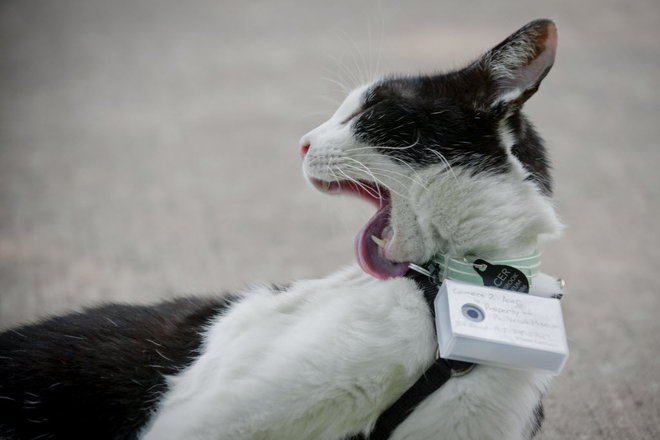
Facebook, Twitter, YouTube, LinkedIn, Blogger, Tumblr—the world is awash in social media platforms and museums are, like the rest of the world, experimenting with when to use them, to what ends and how to measure success. Guest blogger Jeff Martin, online communities manager from the Philbrook Museum of Art, relates the museum’s success in catapulting themselves to Internet celebrity via playful and creative social media shenanigans.
 |
| Acer, one of two Philbrook garden cats. JEFF LAUTENBERGER/Tulsa World |
Museums across the country, and for that matter, around the world, are constantly seeking new avenues to reach a broader and more diverse audience. With the growing interest in and influence of social media, the “traditional” way of interacting with the public at large is shifting seemingly from moment to moment. At the Philbrook Museum of Art in Tulsa, Okla., where I’ve worked since summer 2009 as the Online Communities Manager, we have two cats that patrol our 23 acres of gardens. Acer (male) and Perilla (female) have been with us for 3 years and have grown into two of our most popular attractions. A few months ago, our garden manager approached us with an idea. What if we put cameras on the cats? The idea wasn’t revolutionary; people have put cameras on cats before. But not at a world-class art museum. In the past two years we’ve seen our social media presence grow by leaps and bounds. Through this still-burgeoning outlet, we have the opportunity to tell our story in a broader scope. On Facebook alone, we’ve gone from 2,000 followers to well beyond 20,000, an increase of ten fold. With this spike, we’ve seen our footprint in the community grow as well. By asking questions, posting consistently, and providing both interesting and sometimes merely entertaining content, we have been able to engage in a new and somewhat revelatory way.
A couple of weeks ago, when we kicked-off this project involving the cats, we knew it would get some attention. Animal stories have always been an easy pitch for the media. What we didn’t expect was how quickly this would occur. Within an hour of the first Facebook post, nearly every major media outlet in town, each one hoping to scoop the other, contacted us with heated interest. The local CBS affiliate was the first to arrive. Our local newspaper, the ABC affiliate and others soon followed. This was all accomplished without a traditional press release. No phone calls were made. No emails were sent. Citing the viral and word-of-mouth culture that social media feeds, one of the television reporters told us that he was standing in line at a local ice cream shop when someone said, “Did you hear that Philbrook put cameras on their cats?” Within days of the first footage being posted, we were getting comments from as far away as Minnesota and North Carolina. This “little” idea was getting big attention. But ultimately, this project isn’t about cats or cameras. We are still a museum dedicated to sharing the finest examples of visual art with the guests that take the time to come through our doors. That is our mission. But in this ever-changing world, we also have a responsibility to use every available means to stay connected on a human level to those who make what we do possible. Social media, at its most effective, has become an invaluable tool in this pursuit. Whether through Facebook, Twitter, or another application, we are casting a wide net, hoping that something will capture the imagination and attention of the public at large. For some it’s a painting, for others it’s our beautiful gardens.But sometimes, all it takes is a camera on a cat.








Sure, animal stories are an easy touch, but as you mentioned, it's not typical museum fare at all, which is why I love it. Well done!